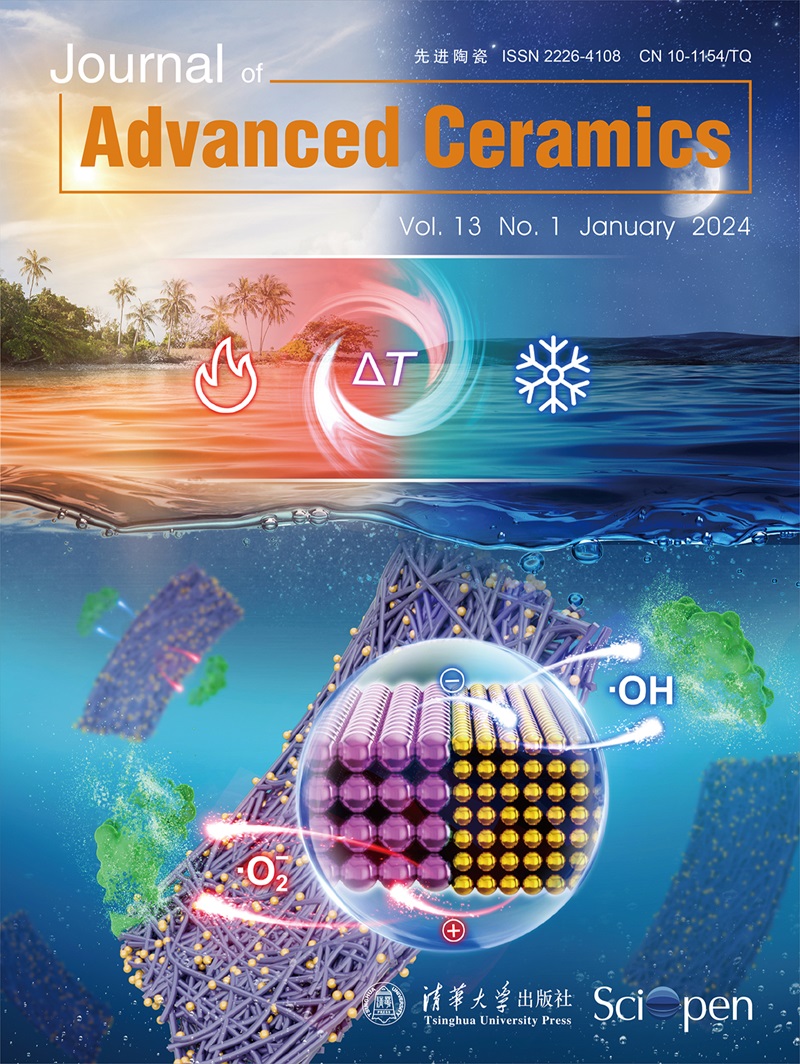Cubic Phases in the Gd2O3-ZrO2 and Dy2O3-TiO2 Systems for Nuclear Industry Applications
IF 16.6
1区 材料科学
Q1 MATERIALS SCIENCE, CERAMICS
引用次数: 2
Abstract
Neutron absorbers are elements with a high neutron capture cross section that are employed at nuclear reactors to control excess fuel reactivity. If these absorbers are converted into materials of relatively low absorption cross section as the result of neutron absorption, they consume during the reactor core life and so are called burnable. These elements can be distributed inside an oxide ceramic that is stable under irradiation and thus called inert. Cubic zirconium oxide is one of the preferred materials to be used as inert matrix. It is stable under irradiation, experiments very low swelling, and is isomorphic to uranium oxide. The cubic phase is stabilized by adding small amounts of dopants like Dy2O3 and Gd2O3. As both dysprosium and gadolinium have a high neutron cross section, they are good candidates to prepare burnable neutron absorbers. Pyrochlores, like Gd2Zr2O7 and Dy2Ti2O7, allow the solid solution of a large quantity of elements besides being stable under irradiation. These characteristics make them also useful for safe storage of nuclear wastes. We present a preliminary study of the thermal analysis of different compositions in the systems Gd2O3-ZrO2 and Dy2O3-TiO2, investigating the feasibility to obtain oxide ceramics useful for the nuclear industry.核工业用Gd2O3-ZrO2和Dy2O3-TiO2体系的立方相研究
中子吸收剂是一种具有高中子捕获截面的元件,用于核反应堆中控制过度的燃料反应性。如果这些吸收剂由于中子吸收而转化为吸收截面相对较低的材料,则它们在反应堆堆芯寿命期间消耗,因此称为可燃。这些元素可以分布在氧化陶瓷中,这种陶瓷在辐照下是稳定的,因此被称为惰性的。立方氧化锆是作为惰性基质的首选材料之一。它在辐照下稳定,实验膨胀很小,与氧化铀同构。通过添加少量的掺杂剂如Dy2O3和Gd2O3来稳定立方相。由于镝和钆都具有高的中子截面,它们是制备可燃中子吸收剂的良好候选者。焦绿石,如Gd2Zr2O7和Dy2Ti2O7,除了在辐照下稳定外,还允许大量元素的固溶体。这些特性使它们对安全储存核废料也很有用。我们对不同成分的Gd2O3-ZrO2和Dy2O3-TiO2体系进行了初步的热分析研究,探讨了获得核工业用氧化物陶瓷的可行性。
本文章由计算机程序翻译,如有差异,请以英文原文为准。
求助全文
约1分钟内获得全文
求助全文
来源期刊

Journal of Advanced Ceramics
MATERIALS SCIENCE, CERAMICS-
CiteScore
21.00
自引率
10.70%
发文量
290
审稿时长
14 days
期刊介绍:
Journal of Advanced Ceramics is a single-blind peer-reviewed, open access international journal published on behalf of the State Key Laboratory of New Ceramics and Fine Processing (Tsinghua University, China) and the Advanced Ceramics Division of the Chinese Ceramic Society.
Journal of Advanced Ceramics provides a forum for publishing original research papers, rapid communications, and commissioned reviews relating to advanced ceramic materials in the forms of particulates, dense or porous bodies, thin/thick films or coatings and laminated, graded and composite structures.
 求助内容:
求助内容: 应助结果提醒方式:
应助结果提醒方式:


